|
The above conjunction would have been marvellous in the
following setting a week later, but the Moon would have been
too bright in the longer exposure required to capture the
fainter stars. The early hours of the 4th. August found me
at the castle gate on Lindisfarne (Holy Island),
Northumberland. (I was on a singing holiday, but couldn't
resist the dark skies!) Clouds around, and the top picture
was the result. (Reflex camera, 58 mm lens at f/5.8)
I returned the following night to clear but slightly hazy
skies, and a two minute exposure piggybacked at f/5.8 with
200 ISO film captured the lower picture of the Castle and a
lovely grouping of planets and stars, while a 15 minute semi
guided exposure brought up hundreds of stars in Cygnus,
limiting magnitude around 8.5. Not long enough for the
nebulosities unfortunately. Next time perhaps?
Interestingly, the movement of Jupiter against the
background stars in the 24 hours between the photographs is
clearly visible in the enlargements.
Coma in the upper stars in the Castle photo is probably
due to a lens deficiency - I'll have to try a better one. If
anybody has a preference for either composition, please let
me know.
|

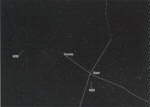

|
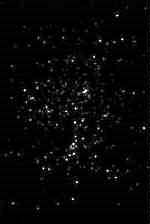

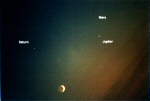




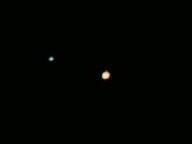
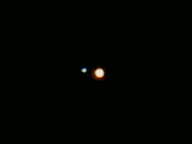
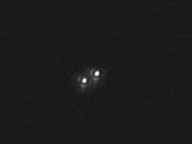
 -----
-----